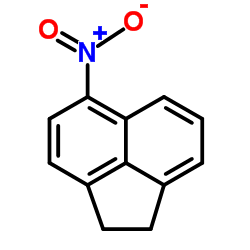| Structure | Name/CAS No. | Articles |
|---|---|---|
 |
5-Nitro-1,2-dihydroacenaphthylene
CAS:602-87-9 |
| Structure | Name/CAS No. | Articles |
|---|---|---|
 |
5-Nitro-1,2-dihydroacenaphthylene
CAS:602-87-9 |